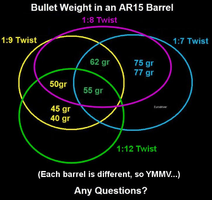(1) .223 Remington came first. In the 1970s, FN developed 5.56x45 using .223 Rem as the starting point. Prior to FN developing 5.56, only the US and some of our allies, such as people we gave early M16s to and also Israel, were using .223. After NATO adoption, different story.
(2) Because .223 Remington is a commercial cartridge, there isn't one, set, defined load. However, 55gr @ 3250fps is pretty normal in .223.
With 5.56 being a NATO standard cartridge, it usually comes in three flavors - 55gr M193, 62gr SS109 and M855 ("Green Tip"), and 77gr match ammo. There are obviously a bunch of niche military loads for specific purposes, but most 5.56 is 55gr or 62gr, with guys going for match or mid/long range shooting 77ish-grain bullets. One of my college professors was a CMP shooter back in the 90s and he was one of the first guys among his shooting friends to start experimenting with big, long, heavy bullets back in the day. Now, not so unusual.
(3) Use a twist rate that matches up with what you're primarily going to shoot, or, the biggest bullet you would want to shoot. Usually, 1-in-7 and 1-in-8 are typical these days. 1-in-12 is basically only for 55gr bullets.
Historical clone guns are a different discussion. If you're building or buying a clone, get the historically correct twist rate. My 5.56 Beryl, for example, is set up to primarily shoot 62gr but also 55gr when needed.
(4) The cartridges are largely interchangeable provided you stay within acceptable parameters for your twist rate, chamber, etc. Don't stuff a huge, long, 80gr bullet into a 1-in-12 twist barrel, or shoot very spicy handloads in a military-spec barrel, and you'll be fine. Err on the side of caution.
Using my Beryl as an example again, the model name includes "223", but the barrel's stamped "5.56". So, I just shoot 5.56 M855 and M193 in it. No reason to deviate for that gun.
(5) Where are you seeing *actual, not mild* steel core ammo to warrant concern? Mild and bi-metal steel cores aren't a worry. You likely won't shoot the gun enough to notice.
Actual steel core ammo isn't easy to find, let alone shoot in sufficient volume to warrant concern.
(6) With the Russian ammo ban taking effect, I also wouldn't overthink steel cased ammo. Steel cased is probably going to slowly leave the market. I love steel cased ammo and haven't seen any issues.
Another historical note - French 55gr ammo uses steel cases. The French adopted .223/5.56 in the mid-70s, before NATO really settled on a common cartridge. The rest of NATO uses brass, I think.


